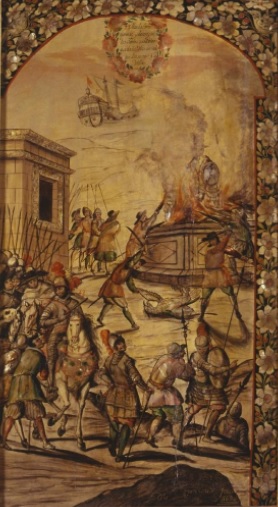
This lechuguilla collar opener was used to shape the abanillos (wavy fan-shaped folds) that gave the collars their particular characteristic. The piece is undoubtedly Spanish due to the forge and the widespread use of these garments while the lechuguilla fashion was in vogue. Its ends are made up of two rods of different sizes, suitable for fans of different openings; between the two there are two knots that separate them, which could act as a thermal barrier. The decoration of the piece suggests that it was made in the second half of the 16th century and that it was made in a good-quality workshop. Towards the end of the 16th century, the opening grew to large limits that were eventually abolished after the pragmatic ruling of 1623.
Collection: Images
Project: 11. Science and culture as representation in Europe.
Chronology: XVI, XVII
Scope: Secondary education, Baccalaureate, University
Link: http://ceres.mcu.es/pages/Main?idt=86292&inventary=CE28908&table=FMUS&museum=MNAD
Resource type: Image
Format: Forge
Source: Museo Nacional de Artes Decorativas (Madrid)
Language: Spanish
Date: 1550-1625
Owner: Álvaro Romero González (Modernalia)
Identifier: CE28908
Copyright: Museo Nacional de Artes Decorativas (Madrid)
Abstract: Everyday 16th-17th century clothing utensils for opening lechuguilla collars
Image
Tags






